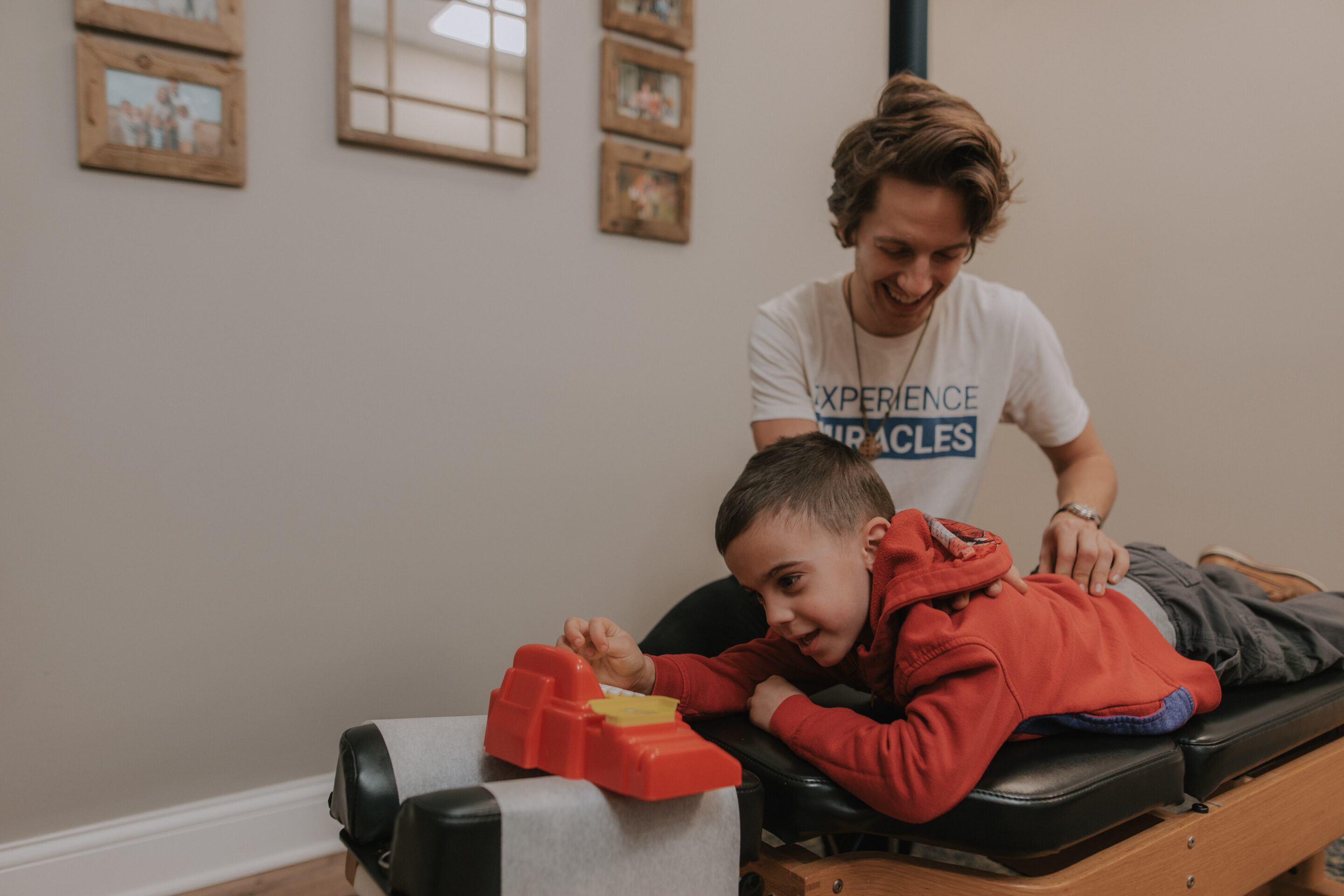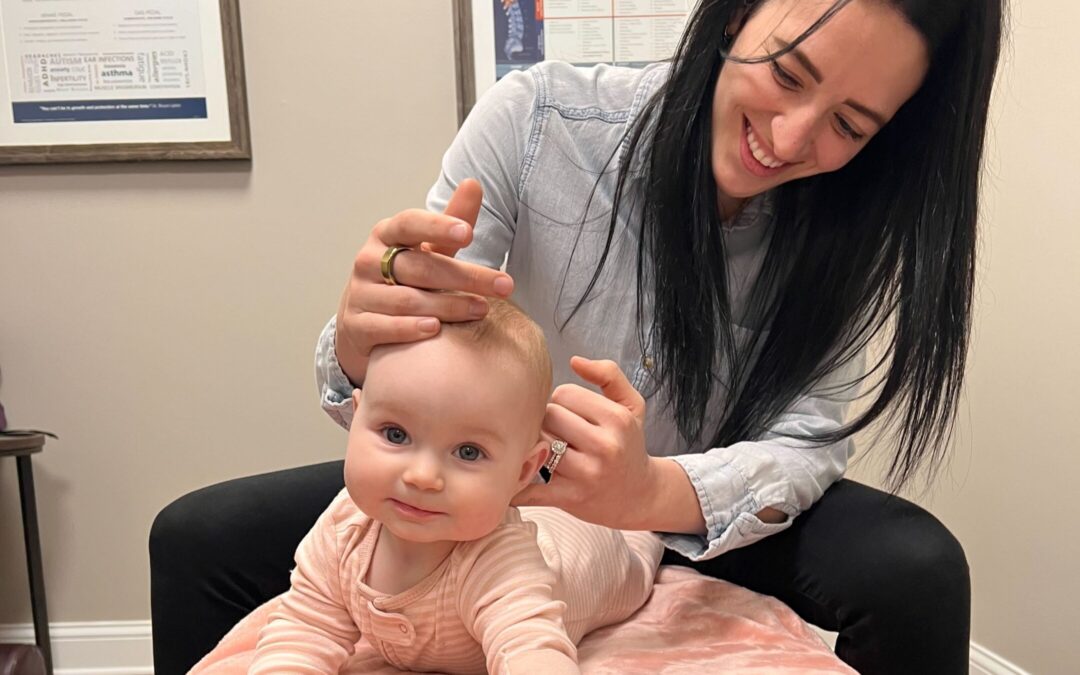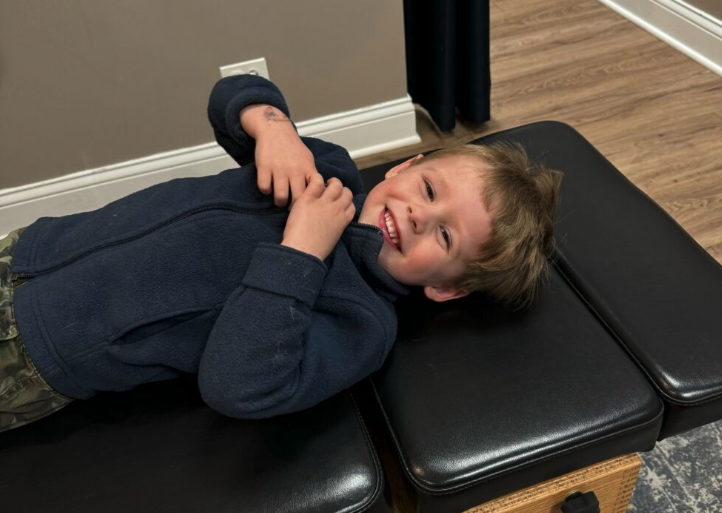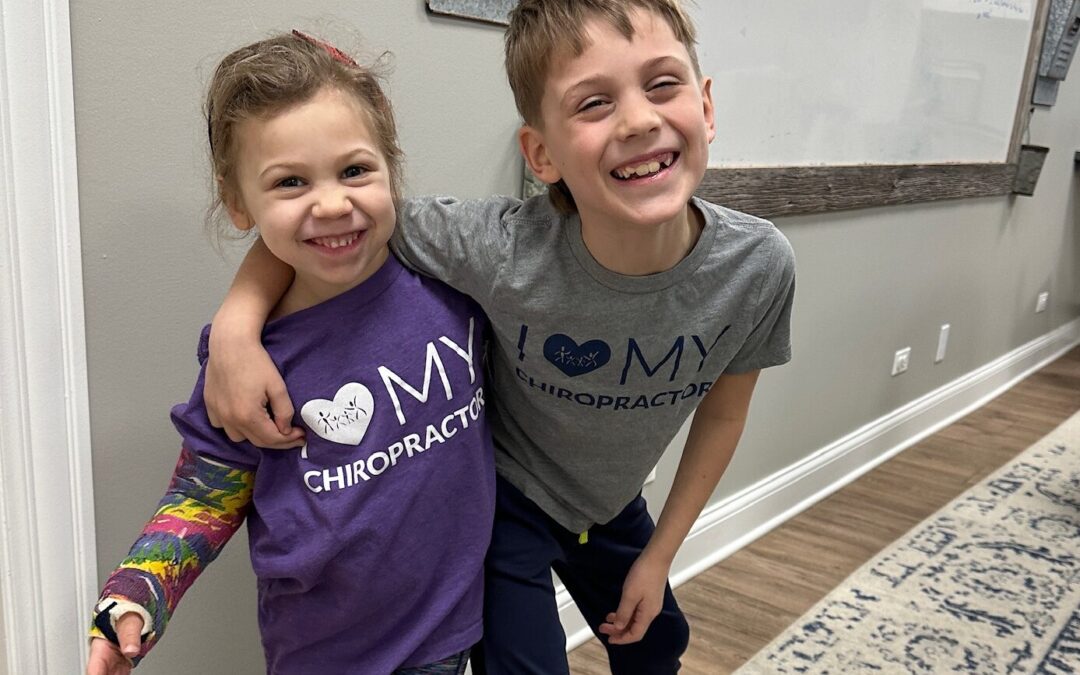From the moment Hayley’s mom woke up each morning, a sense of unease enveloped her, anticipating the forthcoming morning routine. Hayley’s extreme anxiety about going to school only intensified with each passing moment, often culminating in anger and heated confrontations.
What broke her parent’s hearts the most was when Hayley would come to them upset and explain that she didn’t want to feel or act this way. It was entirely out of her control. They found it unbearable that their sweet and caring girl was looked at as a problem because of her overpowering anxiety.
Despite being advised that medication was the optimal course of action for Hayley, even she resisted the idea, recognizing that it was not a suitable remedy for her situation.
They were at a loss until one day, a family friend recommended they look into Neurologically-Focused Chiropractic Care. They were intrigued and decided to give it a try.
In this article, we will delve into the realm of crippling anxiety, its various types due to each child’s uniqueness, and its underlying neurological nature. By understanding anxiety as a neurological challenge, we can explore how a Neurologically-Focused Chiropractic approach can assist in managing anxiety and promote overall well-being.
What is Anxiety?
Anxiety, sometimes referred to as a panic attack, is an intense and excessive feeling of worry or fear of the future. Anxiety is a natural human response when we perceive a threat and can manifest through our thoughts, emotions, and physical sensations.
Many individuals experience occasional anxiety, especially when facing stressful situations or significant life changes that may have a profound impact. The “fight, flight, or freeze” response is a fundamental human reaction, serving as a mechanism for self-protection.
When we perceive a threat, our brain and nervous system tell our bodies to release specific hormones, such as adrenaline and cortisol, which offer beneficial effects. These hormones enhance our alertness, allowing us to reason swiftly while also increasing our heart rate to facilitate optimal blood flow and circulation to vital areas. This response “readies” us for the potential threat. Subsequently, when the perceived threat subsides, our bodies release alternative hormones that aid in muscle relaxation.
Similarly to Hayley’s case, anger often goes hand and hand with anxiety. When a child feels overwhelmed or threatened, and their fight-or-flight response is triggered, anger is a common coping mechanism they think they need to use to protect themselves and regain control. The constant worry and tension associated with anxiety can also contribute to feelings of irritability and anger.
If anxiety significantly impedes your ability to live life to the fullest, it can develop into a mental health issue. In children, anxiety can significantly impact their overall well-being and development. Understanding the neurological aspects of anxiety is essential for overall support.
What are the Signs and Symptoms of Anxiety?
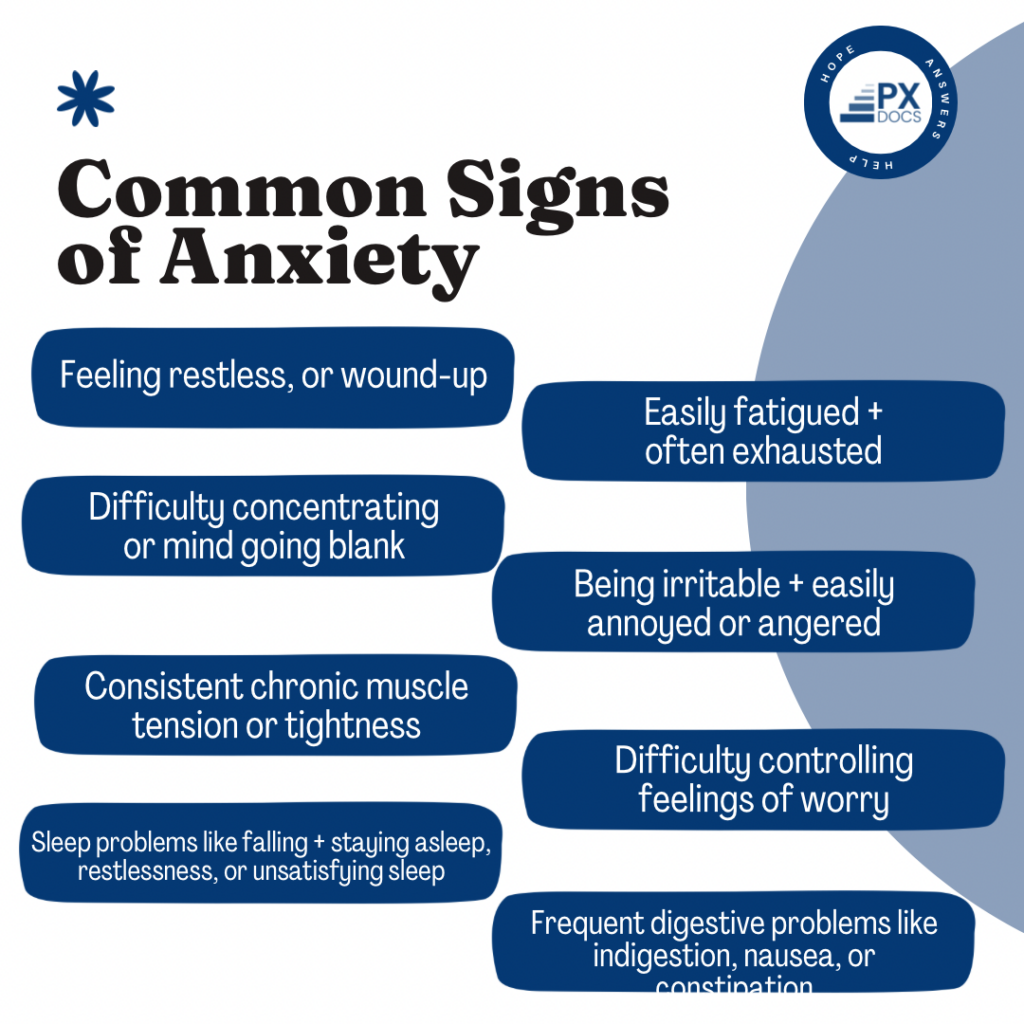
Recognizing the signs and symptoms of anxiety is crucial for early identification and intervention. Common symptoms of anxiety in children include:
- Feeling nervous, restless, or tense
- Having a sense of impending danger, panic, or doom
- Increased heart rate
- Rapid breathing (hyperventilation)
- Sweating
- Trembling
- Feeling weak or tired
- Trouble concentrating or being preoccupied with worries
- Difficulty sleeping
- Experiencing gastrointestinal (GI) problems
In addition to the signs mentioned above, they may also observe:
- Sensory sensitivity: Heightened sensitivity to sensory stimuli, such as light, sound, touch, or smells
- Impaired emotional regulation: Difficulty managing and expressing emotions appropriately.
- Sleep disturbances: Insomnia, nightmares, or frequent waking during the night.
- Muscle tension and postural changes: Increased muscle tension, poor posture, and changes in body alignment due to chronic stress.
While traditional medical sources provide insights into common indicators of anxiety, a Neurologically-Focused Pediatric Chiropractor takes a different approach that dives far deeper.
We first begin by going all the way back into the child’s case history, considering important elements as far back as fertility, pregnancy, and labor and delivery. By diving this deep into the case history of a child struggling with anxiety, we can find not just when the symptoms first began to occur but, far more importantly, when the nervous system may have first shifted into sympathetic “fight, flight, or freeze” overdrive. This excessive sympathetic nervous system response is the true root cause of anxiety and emotional dysregulation, and we’ll discuss it in detail later on in the article.
Many times the more noticeable and describable signs of anxiety may not show up in a child until school age or even teenage years, but again and again, we find early signs of stress as far back as infancy and early childhood development.
Additionally, as shown in the list of signs and symptoms above, anxiety usually does not exist alone, just like many other neurological conditions. It frequently accompanies ADHD, Autism Spectrum Disorder, and Sensory Processing Disorder, along with various other mental health challenges.
Different Types of Anxiety
Understanding the different types of anxiety helps tailor care to individual needs. The nervous system plays a crucial role in regulating emotions, stress responses, and overall well-being. While the traditional types of anxiety mentioned earlier still apply, a neurological focus explores the underlying neurophysiological factors that may contribute to these specific types:
- Agoraphobia: the fear of avoidance of situations or places that might trigger panic attacks, often associated with sensory overload or vestibular dysfunction.
- Anxiety due to a medical condition: Anxiety symptoms arise from an underlying medical condition affecting the nervous system or disrupting autonomic nervous system regulation and function
- Panic Disorder: Recurrent panic attacks resulting from dysregulation in the autonomic nervous system, which neurological imbalances can influence.
- Separation Anxiety: Overwhelming fear or distress when separated from a primary caregiver, often linked to dysregulation of the attachment and fear circuits in the brain.
- Social Anxiety: Intense fear or anxiety related to social situations or performance, which can be influenced by sensory processing challenges or difficulties with social-emotional regulation.
What Causes Anxiety?
The traditional medical world believes that the causes of anxiety are not fully known and can be difficult to pinpoint. But they attribute these challenges to family history, brain chemistry, stress, or a child’s environment. High-pressure life events or a stressful environment can certainly contribute, but another set of factors related to neurological health is missing.
When considering a Neurologically-Focused Chiropractic approach to anxiety management, three (3) important concepts to consider are subluxation, dysautonomia, and dysfunction of the vagus nerve.
Subluxation refers to misalignment, tension, and imbalance built up or stuck within the nervous system. Over time this tension then disrupts the balance of the central and autonomic nervous system, leading to what’s known as dysautonomia. These subluxations interfere with the communication between the brain and the rest of the body, including the organs and tissues involved in the stress response, most notably the adrenal glands.
When the nervous system is stuck in a sustained sympathetic response, it stimulates the adrenals and other stress hormone-related glands to constantly put forth neurotransmitters and signals that trigger anxiety and distress. This feeling of anxiety and distress then activates the sympathetic response even further, leading to a vicious neurological cycle we call the Perfect Storm.
Dysautonomia, The Vagus Nerve, and Anxiety
Subluxation contributes to the imbalance in the autonomic nervous system (dysautonomia), with an overactive sympathetic response and an underactive parasympathetic response. This imbalance heightens the body’s stress response, resulting in a raised state of arousal, increased heart rate, and other physiological symptoms associated with anxiety.
So if the nervous system is overstressed, dysfunctional, and imbalanced, the chemicals that transmit messages throughout the body for it will also become imbalanced. That is why these chemicals are called “neurotransmitters” – they literally transmit messages for the nervous system. So while many patients have been told the cause of their anxiety and neurological disorder is a “chemical imbalance,” that simply cannot be entirely true since those chemicals are simply following the stimulation and response of the nervous system itself.
The primary nerve responsible for the “rest and relaxation” (parasympathetic) side of the nervous system is the Vagus Nerve, and it is often injured or damaged (subluxated) during the birth process, especially when interventions such as c-section, forceps, vacuum or induction occurs. Overlooked and dismissed birth trauma is frequently seen in children struggling with anxiety, as well as ADHD, Sensory Processing Disorder, and other neurodevelopmental challenges.
Pediatricians often dismiss a child’s early struggles, such as colic, reflux, and recurrent ear infections. But we understand that these early childhood stressors can be a sign of neurological dysfunction and imbalance brewing, and therefore can be a sign of anxiety challenges down the road if that subluxation and neurological imbalance is not addressed. This stress on the nervous system continues to worsen as the child grows due to the overwhelming amount of busyness, everyday stress, and toxins in our environment today.
Drug-Free Care Options For Children With Anxiety?
As Neurologically-Focused Chiropractors, our approach focuses entirely on addressing the root cause of your child’s anxiety and seeking to restore balance to the Autonomic Nervous System and Vagus Nerve.
In order to get the sympathetic fight-or-flight response to calm down and not remain stuck in overdrive, we’ve got to focus first on activating and stimulating the Vagus Nerve and parasympathetic, calming side of the nervous system.
Our clinical approach is different from that of traditional medicine and therapies and begins with an in-depth case history and consultation with your PX Doc, who will dive deep with you into the known triggers of your child’s anxiety. This may include any birth and physical traumas, stressful life events, and any other noxious stimuli and toxins that show up way too often in a child’s life today. We really want to dive deeper into the day-to-day struggles of our patients and get to know where the struggles really show up in everyday life.
From there, our PX Doctors Network utilizes an incredible piece of technology that addresses the root cause of anxiety instead of just having you fill out a survey or list symptoms like most neuropsychiatric or medical “exams” for anxiety.
These INSiGHT scans are truly remarkable as they aid in identifying and detecting the presence of subluxation and dysautonomia, allowing us to quantify the severity and pinpoint specific areas that require attention and adjustments.
The best part about natural and neurological approaches, such as chiropractic, is that we are not trying to “cure” anxiety, and we refrain from attempting to directly treat the condition or merely alleviate the symptoms. Instead, we focus on diminishing stress and tension that has accumulated within a child’s nervous system. This approach enhances the child’s potential by activating and stimulating the vagus nerve and parasympathetic side of the nervous system.
Once Hayley started Neurologically-Focused Chiropractic Care and they saw her INSiGHT scans, her family finally felt like the root cause of her challenges were detected, and they could get her the help she truly needed. They stayed consistent with her care plan, and slowly, they saw their little girl coming back!
She started playing without worry again, was less anxious and overwhelmed, and got better at communicating with her mom about how she was feeling. She was able to make it to school, only missing two days the entire year, and even wanted to try some after-school activities. This is the power of Neurologically-Focused Chiropractic Care that every child struggling with anxiety or sensory disorders deserves to experience!
How PX Docs Can Help
If your child is struggling with anxiety or any other neurological challenge, consult with a PX doctor today by visiting our directory right away!
Parents today want answers that are more than just putting a bunch of symptoms together and labeling their child with anxiety. They want a deeper understanding of the root causes and to seek drug-free approaches to effectively care for and manage their child’s anxiety. Their ultimate goal is to enable their child to flourish and function at their best… and it’s ours, too!
The PX Docs Network is full of doctors who care enough to truly listen, dive deep with you, and create a customized action plan that helps your child heal without drugs. We want to help your child achieve a brighter future and enable them to enjoy a life free from crippling anxiety.

